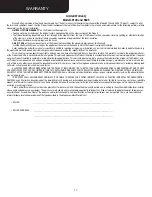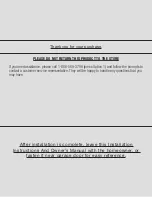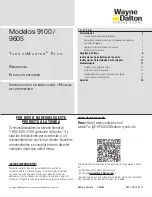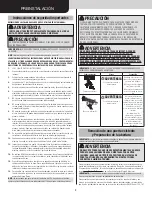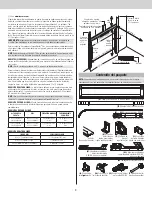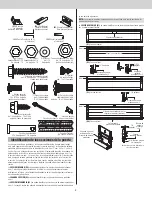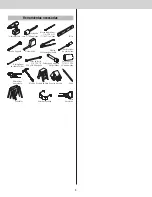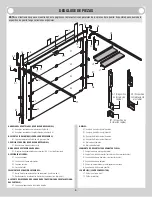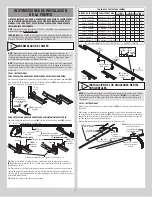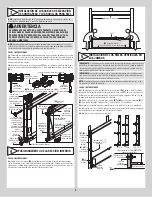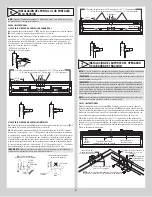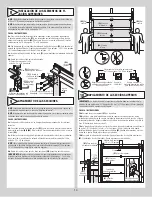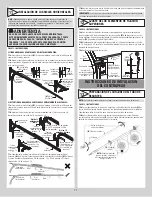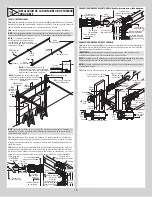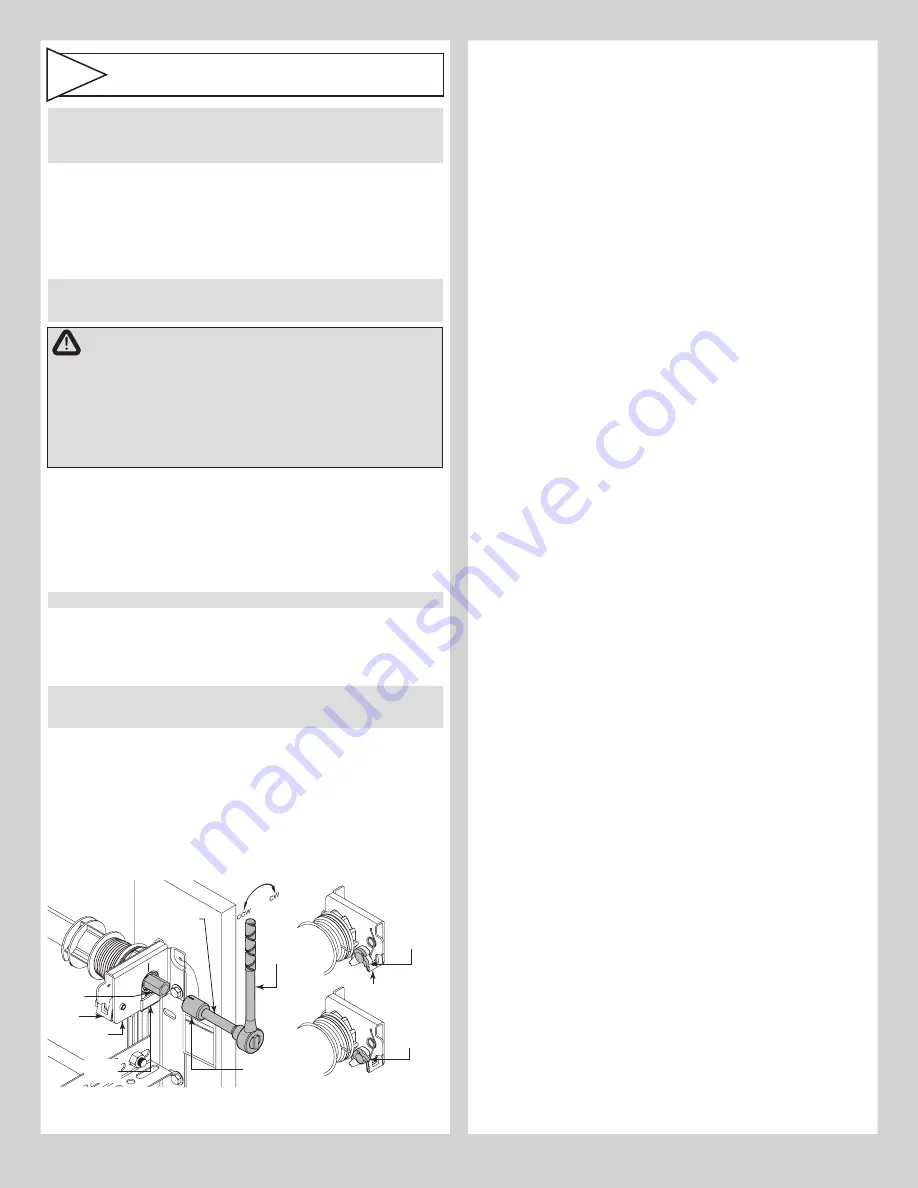
BALANCING DOOR
22
NOTE:
Windows may cause the top section to be significantly heavier than the remaining
sections. Wayne Dalton attempts to balance the door at the top and bottom. To prevent any
sudden door acceleration between the top and bottom, we recommend motor operating all
doors with windows.
STEP 22 INSTRUCTIONS
22a.
Remove any locking pliers. Lift the door and check its balance. Adjust spring(s) if door
lifts by itself (hard to pull down) or if door is difficult to lift (drifts down). Anytime spring
adjustments are made, ratchet pawl knob must be in the upper position. An unbalanced door
can cause TorqueMaster
®
Plus operation problems.
22b.
Close the door and place locking pliers onto both vertical tracks just above the third
track roller. This is to prevent the garage door from rising while adjusting the spring(s).
IMPORTANT:
To adjust springs, only add or remove a maximum of 3/10 of a turn (three
teeth on the ratchet wheel) at a time. Both sides need to be adjusted equally on double
spring doors.
WARNING
EXTREME CAUTION SHOULD BE USED WHEN WINDING SPRINGS AS
FAILURE TO FOLLOW THE INSTRUCTIONS OR USE THE PROPER TOOLS
CAN LEAD TO SERIOUS INJURY TO PERSONS AND PROPERTY. BEFORE
ATTEMPTING TO WIND THE SPRING, MAKE SURE YOU HAVE READ
AND UNDERSTAND THE INSTRUCTIONS. IF YOU ARE UNCLEAR ON ANY
ASPECT OF THE INSTALLATION PROCEDURES, YOU SHOULD CONSULT A
TRAINED DOOR SYSTEMS TECHNICIAN.
22c.
ADD SPRING TENSION:
The ratchet wheel is made of 10 teeth. To add spring tension,
tighten counter clockwise on the right hand side and clockwise on the left hand side. Place
pawl knob in upper position. Place the ratchet with 5/8” socket and 3” ratchet extension
onto the winding shaft, to add 3/10 of a turn. Watch as three teeth of the ratchet wheel pass
over the pawl, creating three “clicks”. Place pawl knob in lower position. For double spring
applications, repeat the same process for the other side.
22d.
REMOVE SPRING TENSION:
To remove spring tension, place a regular 5/8” wrench
onto the winding shaft. Place pawl knob in upper position.
IMPORTANT:
Be prepared to hold the full tension of the spring.
Pull down on the wrench to relieve pressure between the pawl and the ratchet wheel. Push in
on the pawl to allow the three ratchet wheel teeth to pass by the pawl, as you carefully allow
the wrench to be rotated upward by the spring tension, release the pawl to allow it to engage
with the ratchet wheel. Place pawl knob in lower position. For double spring applications,
repeat the same process for the other side.
IMPORTANT:
Do not add or remove more than 1 spring turn (1 spring turn equals 10 teeth
on ratchet wheel) from the recommended number of turns shown on the winding spring
turn chart.
22e.
If the door still does not operate easily, lower the door into the closed position, unwind
spring(s) completely, and recheck the following items:
22f.
Is the door level?
22g.
Are the spring tube and flag angles level and plumb?
22h.
Does the distance between the flag angles equal door width plus 3-3/8” to 3-1/2”?
22i.
Do the counterbalance lift cables have equal tension? Adjust if necessary.
22j.
Rewind the spring(s).
22k.
Make sure door is not rubbing on jambs.
Ratchet
wrench
End bracket
Pawl
Winding
shaft
Ratchet
wheel
Pawl
knob in
lower
position
Pawl
knob in
upper
position
Pawl
3”
Ratchet
extension
5/8” Socket
15

















